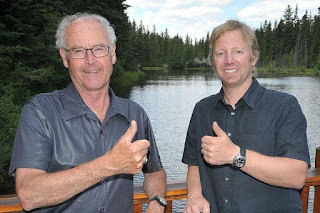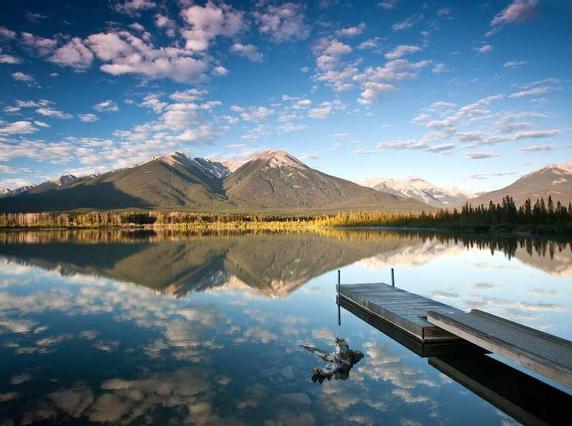TORONTO, July 13, 2016 – Canada’s residential real estate market continued to show strong appreciation in the second quarter of 2016, posting the highest national year-over-year gain seen in five years, according to the Royal LePage House Price Survey[1] and Market Survey Forecast released today. Amid continued world economic uncertainty, the historically low interest rate environment that has fueled Canada’s real estate market growth in recent years – most notably in Greater Vancouver and the Greater Toronto Area (GTA) – is expected to continue longer than anticipated. This extended period of low-cost borrowing will in turn further delay the cyclical cooling of Canada’s hottest real estate markets, originally forecasted for the second half of 2016.
The Royal LePage National House Price Composite, compiled from proprietary property data in 53 of the nation’s largest real estate markets, shows that the price[2]of a home in Canada increased 9.2 per cent year-over-year to $520,223 in the second quarter of 2016. During the same period, the price of a two-storey home rose 10.7 per cent year-over-year to $619,671, the price of a bungalow increased 7.9 per cent to $437,121, and the price of a condominium increased 4.2 per cent to $348,189. Looking ahead to the remainder of 2016, Royal LePage forecasts that the aggregate price of a home in Canada will increase 12.4 per cent when compared to year end 2015.
“Our forecasting models, which pointed to a slowing housing market as the year progressed, included a modest increase in the cost of borrowing,” said Phil Soper, president and chief executive officer, Royal LePage. “Economic and social disruptions have rocked the world once again, introducing new risks and making it very likely that the Bank of Canada will leave interest rates as-is for now. Few industries are as rate sensitive as real estate. We don’t see even a mild correction for either the Toronto or pistol-hot Vancouver markets in 2016.”
“Our call for 12.4 per cent national price appreciation in the final quarter of this calendar year as compared to the final quarter of last year, is a landmark in Canada. I believe it is the highest value put forward by any serious forecasting agency since the turn of the century,” added Soper.
On June 23, 2016, Britons voted to leave the European Union, surprising financial markets worldwide. The British currency plummeted and the value of equities around the world swung wildly. Adding to economic uncertainty is an uncharted road ahead for decoupling the U.K. from the E.U., a process which some have predicted could take two years. This added dimension of uncertainty will encourage central bankers in Canada and abroad to keep rates lower for longer.
“Some have suggested that Britain’s exit from the E.U. will drive more foreign money into the relative safety of Canada’s real estate markets,” said Soper. “We anticipate the impact, if any, will be seen in the commercial property sector and not in housing markets. Beyond Europe, our research does point to increasing Vancouver and Toronto region foreign buyer[3] activity in residential markets this quarter. Canada remains a favoured nation for the world’s real estate investors.”
According to a survey[4] of Royal LePage real estate advisors working within these regions, 71 and 74 per cent said that year-over-year home purchases by international buyers have increased in the second quarter in the GTA and Greater Vancouver, respectively. Still, 35 and 37 per cent of respondents believe that foreign ownership accounts for less than 10 per cent of the GTA and Greater Vancouver housing markets, respectively.
“At Royal LePage, we see residential real estate as a long-term investment supporting family life. A home is ill-suited as a buy-and-flip investment. People that engage in this kind of activity are inevitably burned when a market slows and the time it takes to sell the property increases substantially. We applaud the efforts of all levels of government to better understand Canada’s housing market, through a coordinated effort to gather and analyze real estate data. Still, we remain convinced that heavy-handed use of tax policy in an effort to artificially influence asset values in an open-market economy like ours is fraught with peril, particularly in a cyclical industry like housing,” concluded Soper.
Provincial and City Summaries & Trends
Since the 2014 collapse of oil prices and the subsequent drop in the value of the Canadian dollar, the nation’s economy has been dominated by growth in British Columbia, Ontario, Manitoba and Quebec – the four provinces most tied to the finished goods and services export sector, and by extension, to the health of the U.S. economy. The negative impact of the downturn in the resource sector, in contrast, remains concentrated in Alberta, Saskatchewan, New Brunswick and Newfoundland and Labrador. Across the country, provincial economic trends can be seen influencing residential real estate market performance in most cities.
British Columbia’s economy has outperformed the balance of the country for two years running and is expected to continue doing so into 2017. This economic strength is echoed in the province’s housing market. In the second quarter, Greater Vancouver posted an aggregate year-over-year home price increase of 24.6 per cent to a median price of $1,098,599. During the same period, the city of Vancouver posted a year-over-year gain of 27.5 per cent to $1,330,531, while surrounding areas such as West Vancouver and Richmond posted even higher increases of 29.7 per cent and 28.3 per cent to median prices of $3,093,776 and $972,443, respectively.
Manitoba has been cited as one of the provinces that will outpace the national economy in 2016 and 2017[5]. This is attributed mainly to its strength in a diverse set of industries such as agriculture, health sciences, transportation, manufacturing and business services, rounding off the edges of some of the would-be effects of the commodities downturn. In Winnipeg, the aggregate price of a home increased by a moderate 2.0 per cent in the second quarter to a median price of $285,358, with the detached two-storey home category posting the highest year-over-year price gain of 3.7 per cent to $314,589.
Ontario is expected to be one of the fastest growing provinces in 2016, with employment growth running at twice the national average so far this year. Very strong U.S. employment growth in June should once again stimulate Ontario’s export sector, after a tepid performance in the second quarter, as more American businesses look to Canada for affordable goods and services. The GTA, the province’s largest market, saw notable year-over-year home price appreciation of 10.2 per cent to a median price of $656,365, while home price appreciation in the city of Toronto remained in-line with recent quarters, rising 8.4 per cent to $680,096. Surrounding suburbs such as Richmond Hill, Whitby and Oshawa continued to outpace home price appreciation in the core, posting year-over-year aggregate home price gains of 21.3 per cent, 17.1 per cent and 16.7 per cent, to $992,632, $547,304 and $409,452, respectively. Meanwhile, in the nation’s capital home prices remained steady in the second quarter, with the aggregate price of a home in Ottawa increasing 2.3 per cent to a median price of $401,288.
Strength in exports to the U.S. is expected to continue to support provincial growth in the remainder of the year in Quebec. Last month Fitch Ratings revised its outlook for the province from “negative” to “stable”, citing Quebec’s diverse economy as a key strength. An increase in full-time jobs and renewed stability and confidence in Quebec’s economy is being reflected in the province’s residential housing sector, particularly in the Montreal region. In the second quarter, the aggregate price of a home in the Greater Montreal Area increased by a healthy 3.5 per cent year-over-year to $344,620, while the aggregate price of a home in Montreal Centre rose 4.9 per cent to a median price of $416,953. This is indicative of a transition in the region, which is currently seeing a trend toward a seller’s market in the two-storey home segment, and a balanced market for other property types.
The Conference Board of Canada has projected that Alberta’s economy will dip 2.0 per cent this year as a result of the sharp pullback in drilling and capital investment in the energy sector, along with the impact of the Fort McMurray fires. Despite economic setbacks, residential real estate prices in the region have not seen the depreciation many onlookers had expected. In the second quarter, the aggregate price of a home in Calgary decreased 1.8 per cent year-over-year to $454,790, while the aggregate home price in Edmonton dipped 1.2 per cent to $377,337.
Like Alberta, Saskatchewan is being hit by weakness in the energy sector, with more than 9,000 residents having dropped out of the workforce altogether. As a result, home prices in the province’s major centres have posted slight declines. According to the Royal LePage National House Price Composite, the aggregate price of a home in Saskatoon slipped 0.2 per cent year-over-year to $370,125, while the aggregate home price in Regina decreased slightly, falling 1.7 per cent to $323,612.
Atlantic Canada saw mixed results in the second quarter, with Fredericton posting the highest year-over-year aggregate home price appreciation at 3.8 per cent to $235,425, with Moncton close behind, rising 3.0 per cent to $193,154. Despite a rosier economic prognosis than its Atlantic neighbours, Halifax home prices remained flat year-over-year in the second quarter at $298,753. St. John’s was the only Atlantic city in the Composite to report an aggregate price decline, with the price of a home decreasing 1.5 per cent year-over-year to $336,131 amid a regional economic downturn brought on by the fall in oil prices. Meanwhile, powered by agriculture and tourism, Prince Edward Island’s economy is expected to grow slightly quicker than the national average according to most forecasters, although the residential real estate market has remained relatively flat, with the aggregate home price in Charlottetown rising 0.7 per cent year-over-year to $223,087 in the second quarter.
“Canada is not one homogeneous housing market, but rather a mosaic of many different real estate stories,” stated Soper. “While low interest rates remain the primary driver of Canada’s sustained real estate market expansion, home price trends are increasingly influenced by local factors, from the lift provided by wealthy immigrants to the drag felt by the depressed energy sector,” explained Soper. “The two regions that have provided pleasant surprises have been the oil-impacted regions where home values have been remarkably resilient. And in Quebec, where the broad-based recovery story continues, with Montreal homes experiencing healthy price increases for another consecutive quarter.”
“Southern Ontario continues to see substantial year-over-year home price appreciation, with robust sales activity and price growth in both Toronto proper and in the region’s other urban centres, with no immediate sign of slowing down,” said Soper. “It is completely fair to describe the price increases we have experienced in the Toronto market as healthy; Vancouver is a different story altogether. Canada’s most expensive market is distancing itself from the rest of the country at such a rapid rate that housing affordability has become a major public policy issue.”
“The quest for affordability in Vancouver seems to be influencing consumer housing type choices,” continued Soper. “Alongside skyrocketing prices of single-family homes, we have seen an uptick in the rate of price appreciation for condominiums over 1,000 square feet, when compared to smaller units in this market. This may indicate that families being priced out of the single-family detached home market in Vancouver are looking upwards to condominiums. In the GTA, this trend has not yet taken hold, suggesting that buyers are still predominantly moving ‘out’ to surrounding regions, versus ‘up’, in search of relatively affordable housing options,” concluded Soper.




























